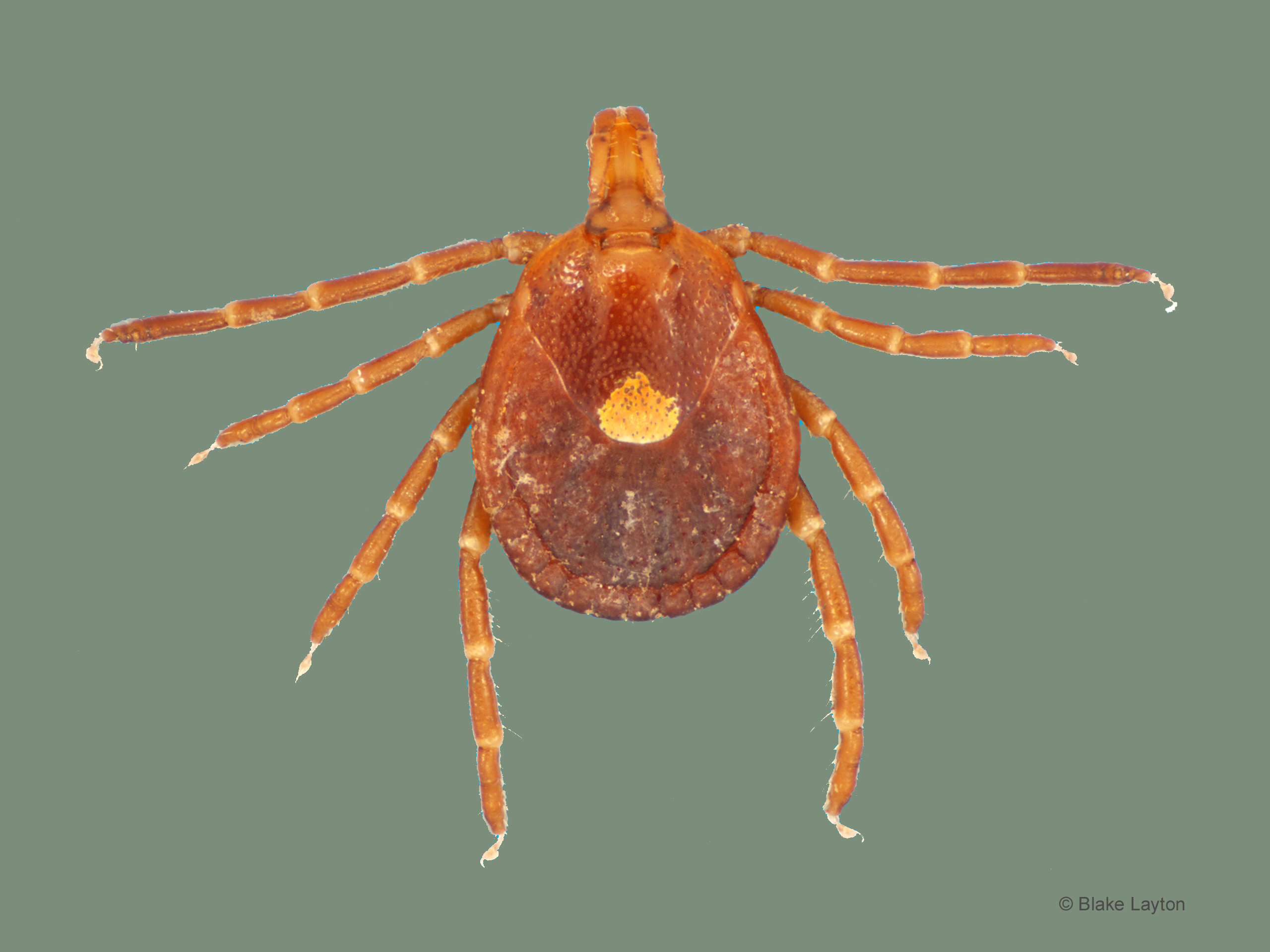Lone Star Tick, Vol. 6, No. 4
Related News
April 11, 2013
April 2, 2013
March 14, 2013
February 28, 2013

Order: Arachnida
Family: Ixodidae
Spending more time outside is a great way to avoid large crowds and maintain social distancing to help prevent spread of COVID-19 virus. Outdoor activities such as gardening, hiking, turkey hunting, fishing, and bird watching don’t usually involve large crowds, but they can involve ticks.
Lone star ticks are just one of several species of ticks that occur in the South, and each of these species can transmit more than one tick-borne disease. For example, lone star ticks can vector tularemia, ehrlichiosis, heartland virus, and southern tick-associated rash illness. Bites of lone star ticks can also cause people to develop an allergy to red meat. This malady that occurs when people become sensitized to the carbohydrate alpha-gal in the tick saliva. Because some of these tick-borne diseases can be quite serious and debilitating, it is wise to take appropriate precautions when working or playing outdoors, especially if you will be in areas where ticks are likely to occur.
Control: The best way to avoid ticks is to stay out of the woods and weeds and on the beaten path. Think about where the animals ticks feed on spend most of their time and try to avoid such places, especially when not properly prepared. Take appropriate precautions when entering “ticky” areas. Wear high-topped boots with pants legs tucked inside, and shirttail tucked into pants. Use DEET-based repellents to protect exposed skin and use permethrin-based repellents to treat clothing and shoes that will be worn into “ticky” areas. Do not apply permethrin products directly to skin! Shower and check for ticks as soon as possible after returning home, and promptly remove any ticks found. Wash hands immediately and thoroughly after handling ticks and use alcohol to disinfect areas surrounding tick bites. Those clothes you were wearing may still have ticks on them. Wash them in hot, soapy water immediately to avoid having hungry ticks wandering around the house.
Minimize tick infestations in home landscapes by keeping grass mown and maintaining weed-free walking trails through wooded areas. Fence yards to keep out large feral mammals, and regularly treat pets with effective tick prevention treatments. This last point is especially important for folks who live in rural settings and have free-roaming dogs or cats. They go roaming in the woods and weeds, accumulating ticks and bringing them back when they return home. To control ticks in home landscapes use broadcast sprays containing active ingredients such as bifenthrin or permethrin. Use sprays, not granules, because granules will drop to the ground below the area where questing ticks are waiting.
See page 16 of Extension Publication 2331, Control Insect Pests in and Around the Home Lawn for more information on controlling ticks in lawns and landscapes: http://extension.msstate.edu/sites/default/files/publications/publications/p2331.pdf
See page 2 of Extension Publication 2597, Control Fleas on Your Pet, in Your House, and in Your Yard, for a list of on-pet flea treatments that also control ticks:
http://extension.msstate.edu/sites/default/files/publications/publications/p2597.pdf
Thanks to Dr. Jerome Goddard, Extension Medical and Veterinary Entomologist, for his assistance and input in preparing this article.
Blake Layton, Extension Entomology Specialist, Mississippi State University Extension Service.
The information given here is for educational purposes only. Always read and follow current label directions. Specific commercial products are mentioned as examples only and reference to specific products or trade names is made with the understanding that no discrimination is intended to other products that may also be suitable and appropriately labeled.
Mississippi State University is an equal opportunity institution.